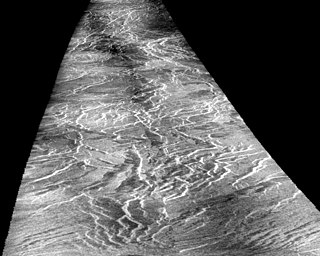In Greek mythology, Asteria was a name attributed to the following eleven individuals:

Asterias is a genus of the Asteriidae family of sea stars. It includes several of the best-known species of sea stars, including the (Atlantic) common starfish, Asterias rubens, and the northern Pacific seastar, Asterias amurensis. The genus contains a total of six species in all.

Asterism, the property of a star stone (asteria), is the phenomenon of gemstones exhibiting a star-like concentration of reflected or refracted light when cut en cabochon.

Eupithecia is a large genus of moths of the family Geometridae. There are hundreds of described species, found in all parts of the world, and new species are discovered on a regular basis.

The lime-speck pug is a moth of the family Geometridae. It is a common species throughout the Palearctic region, the Near East and North Africa.

The common pug(Eupithecia vulgata) is a moth of the family Geometridae. It is a common species across the Palearctic region, the Near East and North Africa. It ranges from the Atlantic coast of Ireland and Portugal across Europe, the Middle East and Central Asia to the Russian Far East (Priamurje) and Korea.

The juniper pug or juniper looper(Eupithecia pusillata) is a moth of the family Geometridae. It is found throughout the Palearctic and Nearctic regions and the Near East.

Tamerlano is an opera seria in three acts written for the Royal Academy of Music theatre company, with music by George Frideric Handel to an Italian text by Nicola Francesco Haym, adapted from Agostin Piovene's Tamerlano together with another libretto entitled Bajazet after Nicolas Pradon's Tamerlan, ou La Mort de Bajazet.

Bajazet is an Italian opera composed by Antonio Vivaldi in 1735. Its libretto was written by Agostino Piovene. It was premiered in Verona, during the Carnival season of that year. This opera is presented in 3 acts, with a three-movement sinfonia as an introduction. The story is about the fate of Bajazet after being captured by Tamerlane. The famous aria, "Sposa son disprezzata" is from this opera.

The starry smooth-hound is a houndshark of the family Triakidae. It is found on the continental shelves of the northeast Atlantic, between latitudes 61° N and 16° N, from the surface to a depth of 200 m (660 ft). It can grow up to a length of 1.4 m.

The common starfish,common sea star or sugar starfish is the most common and familiar starfish in the north-east Atlantic. Belonging to the family Asteriidae, it has five arms and usually grows to between 10–30 cm across, although larger specimens are known. The common starfish is usually orange or brown, and sometimes violet; deep-water specimens are pale. The common starfish is to be found on rocky and gravelly substrates where it feeds on molluscs and other benthic invertebrates.

The larch pug is a moth of the family Geometridae. The species can be found in Europe, the Ural Mountains, West and Central Siberia, the Altai Mountains, Transbaikalia, Yakutia, the Far East, Mongolia, Korea, Japan and in North America, from Yukon and Newfoundland to New York and Arizona.

Eupithecia venosata, the netted pug, is a moth of the family Geometridae. It was first described by Johan Christian Fabricius in 1787. It is found across the Palearctic ecozone from Portugal and Morocco in the west to the Lake Baikal in Siberia and Afghanistan and Pakistan in the east.

Il gran Tamerlano is an opera in three acts by the Czech composer Josef Mysliveček. Its libretto is a rework of Giovanni de Gamerra after Agostino Piovene. All of Mysliveček's operas are of the serious type in Italian referred to as opera seria. Generally this style favored high vocal ranges, both for male and female singers, but for the character of Bajazette, emperor of the Turks, the composer created the only substantial role for a bass singer that appears in any of his operas.

Asterias forbesi, commonly known as Forbes sea star, is a species of starfish in the family Asteriidae. It is found in shallow waters in the northwest Atlantic Ocean and the Caribbean Sea.
Eupithecia variostrigata is a moth in the family Geometridae. It is widespread in the western Palaearctic, ranging from Spain to the western Pamirs in the east.

Asteria Regio is a region on the planet Venus. It is bordered on the southeast by Phoebe Regio. It is located in the Hecate Chasma (v28) quadrangle.

In Greek mythology, Asteria or Asterie was the Titan goddess of nocturnal oracles and falling stars.

ASTERIA is a miniaturized space telescope meant as a technology demonstrator to advance the capabilities for astrophysical measurements. Its bus is a nanosatellite of the 6U CubeSat format. It was designed in collaboration between the Massachusetts Institute of Technology (MIT) and NASA's Jet Propulsion Laboratory.

















